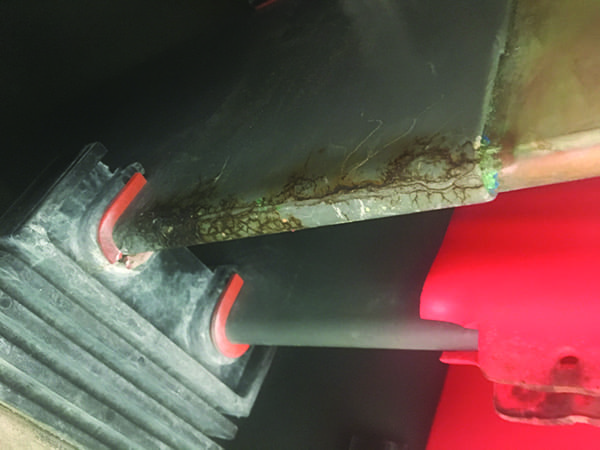Aftermarket Parts Substitutions Can Shut Down a Power Plant
Every power generation facility is unique, as are the functions and maintenance requirements for their equipment.
Keeping equipment in working order and avoiding downtime is critical. Plants will sometimes use what can be referred to as “farm sense,” which is the practice of making rough patches to areas in order to return them to service as soon as possible. This method of repair is well-meaning and resolves issues temporarily, but it can have long-term consequences.
As an example, bus duct owners may substitute maintenance solutions for a number of reasons. The bus duct is a sheet metal duct containing either copper or aluminum busbars for the purpose of conducting electrical current. A power facility could lack planning and maintenance personnel with bus duct experience, and substitutions could be made because of cost, schedule, or lead times.
Substitutions are also made to hardware, such as gaskets, that are often overlooked. At face value these solutions seem viable, but the fallout from using improper maintenance methods or unapproved material substitutions when working on bus duct systems can be immense and prolonged.
Firewall Substitutions
A common substitution of materials is when modifications are made at a firewall entrance in a bus duct. Substitutions here can cause an electrical failure to occur for many different reasons, including improper sealing or installation that leads to water ingress (Figure 1).
Normally, the area should be sealed with a specific fire foam specified by the manufacturer of the bus duct. The original materials are specified and engineered to perform under demanding conditions. Plants will often repair the bus duct themselves and make modifications they think will help keep the moisture out. However, their repairs typically are not adequate, and the moisture ingress will continue.
This continuation causes another failure and another mistake on the part of the plant—replacing the fire foam with something other than the original material. When fire foam is replaced with an unapproved material, it can act like a sponge, and the problem of moisture ingress that caused the failure in the first place will not be resolved (Figure 2).
The subsequent failures that follow this kind of repair can occur more quickly, and be more damaging, than the initial problem. In this case, the substitution goes wrong when the specifications of the substituted fire foam don’t meet the temperature, moisture, or electrical specifications of the original product. For example, epoxy wrap can be used in motor repairs but does not measure up if used in bus duct repairs. If a substitution like this is made, the seal issue will not be corrected at the firewall and the water ingress will continue, prolonging problems and foreshadowing future failures (Figure 3).
Hardware Substitutions
Another common substitution that can lead to damaging water ingress is for the hardware, specifically gaskets, on electrical connections inside bus ducts and covers on the outside. Essentially, the same basic issues arise as with the fire foam. Inside, the substituted material often does not meet the same specifications as the original and will not hold up in extreme heat or cold and will degrade in sunlight.
In addition, sometimes it is not the use of different gaskets but rather the improper installation of the material that causes problems. These substitutions are made for most of the same basic reasons as the fire foam substitutions, with one exception. Because there are some unique geometric designs of rope-type gaskets in bus ducts (Z gasket, D gasket, etc.) it can be hard to procure them in small quantities, so improper substitutions are made to supplement the hardware.
On covers on the outside of bus ducts, the wrong gaskets can cause absorption of moisture and water ingress, but what is most often seen is the complete absence of gaskets after a repair or maintenance. When covers are installed metal-to-metal with no gaskets, the aluminum expands and contracts as it heats. This creates gaps that show up later in the cycle that were not originally there when the cover was installed. The lack of gasket material is one of the biggest factors in allowing water, dust, and dirt debris intrusion into the bus duct (Figure 4).
Substitutions of bolting hardware are another pitfall for plant operators. Some bus duct environments are better suited for silicon bronze bolting material, and some are better with stainless steel. Choosing the wrong material can render the hardware useless. Not using conical washers can also negatively affect bus duct functions. A common mistake, though not an improper material substitution, is not properly torqueing and re-torqueing the hardware. This typically occurs because of a lack of knowledge or poor planning in general.
The use of ferrous fasteners can also cause bus duct failures. They will corrode and degrade over time, compromising their ability to hold a torque. Though non-ferrous hardware often has a higher upfront cost, the cost-saving benefits of using this hardware are apparent in the integrity of the bus system.
Avoiding Future Failures
Sometimes cutting corners with repairs and maintenance seems like the simplest and easiest solution to get a bus duct system and plant running again. Sometimes the cost of products seems like the most important factor to consider when replacing parts. Most times, these temporary decisions are what cause failures in the first place. Consulting appropriate personnel and using proper materials when making repairs to bus ducts are the best ways to save money and protect power plants from costly failures.
—Cal Crader, PE is CEO and Jolene Belair is a project manager at SE Energy LLC, a specialty electrical construction, engineering, and consulting firm.



